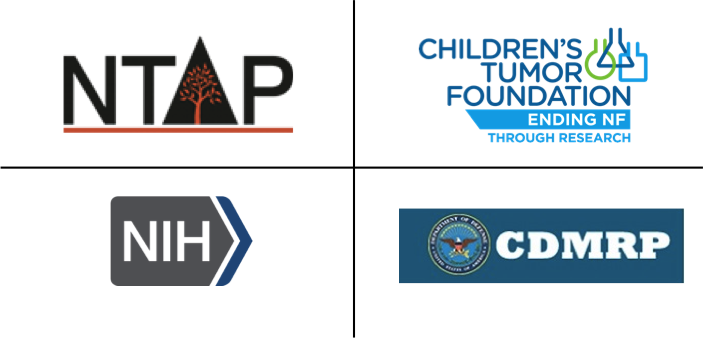One of the exciting developments in neurofibromatosis (NF) research today is the success of MEK inhibitors in clinical trials for various NF1 manifestations. For example, the recent New England Journal of Medicine paper showed that in a phase I study of selumetinib, 70% of children with progressive or symptomatic plexiform neurofibromas had a reduction in tumor volume of 20-55%. The phase II results of this study are looking equally promising which may support this becoming the first-ever approved drug for NF.
We’ve arrived at the important moment because federal and private funders have come together to successfully find drugs for rare childhood tumors by maximizing the efficiency of grant spending. Five years ago, the Children’s Tumor Foundation brought together the major funders in the NF field to proactively and strategically coordinate to ensure that NF funding is efficient and not duplicated, and to include the patient voice in the middle of the partnership. The funders involved in this “MEK story” are the Children’s Tumor Foundation (CTF), the National Institutes of Health (NIH) – including the Pediatric Oncology Branch of the National Cancer Institute (NCI) and the National Institute of Neurological Disorders and Stroke (NINDS), the Congressionally Directed Medical Research Programs (CDMRP), and the Neurofibromatosis Therapeutic Acceleration Program (NTAP) at Johns Hopkins University.
This unique collaboration has brought selumetinib along its path from repurposed oncology drug, to testing in preclinical consortia for its applicability to NF, to its current clinical success in the NF patients, with the potential to become important to a broader group of cancer patients as NF1 is common driver mutation in many cancers such as melanoma, lung cancer and breast cancer. Keeping in mind that this is a first step, and that more treatments are under development for the many different types of NF – including NF1, NF2, and schwannomatosis – this example of how funders can work together not only serves as a model for NF research endeavors, but has the potential to be applied to other disease areas.
In order to make this example more readily available to all researchers, the funders have just published a paper outlining the steps to this achievement, and the impact that it will have for the future of NF patients. That paper, titled “Delivering on the Vision of Bench to Bedside: A Rare Disease Funding Community Collaboration to Develop Effective Therapies for Neurofibromatosis Type 1 Tumors” is available here. A PDF of this paper can be downloaded here.
Fortunately, the growing interest in NF is drawing the attention of many pharmaceutical and biotech companies who are growing the pipeline for both NF1 and NF2, both with MEK and other still developing drug candidates. Their significant efforts – and investments – are generating a revolution in the possibilities for NF research and in cancer in general.
Our common goal is to end NF in all its forms, for all NF patients. By working together, we can take complex NF research – in this instance, from the validation of the MEK target and through the necessary steps to show clinical activity – and turn that research into results that improve the lives of NF patients and their families.


